| February 19 -21, 2010 - Chinese New Year | |||||||||
Chinese New Year, also known as “Spring Festival” or the “Lunar New Year” was celebrated the world over on 14 January. Chinese Calendar that has been in continuous use for centuries predates the International Calendar that is in use. Year 2010 is Year 4707 in the Chinese Calendar. This is the longest and most important celebration in the Chinese Tradition and Culture. It is a traditional practice and customary for all Chinese that though they may be working abroad away from home, but come Chinese New Year, no matter where they are, they will always make an effort to travel back to their parental home to visit their parents, to have reunion dinner on the eve of the Chinese New Year with their parents as well as their siblings as all other family members. This Chinese tradition is to remind all of the importance of the family unit; the importance of unity and love within the family and more importantly the value of filial piety. The Chinese celebrate Chinese New Year for a total of 15 days. This year’s Chinese New Year started on the 26th January and the year is identified as the year of the Tiger as per the Chinese Zodiac and by formal name 2010 is the year of Geng Yin. A total of about 930 Chinese devotees from Malaysia, Singapore, Indonesia, China, Taiwan and Hong Kong participated in a Chinese New Year Celebration held in Prashanti Nilayam on the 6th and 7th day of Chinese New year i.e., 19th and 20th February 2010. The celebration was organized by Zone 4. The theme chosen for this year’s celebration was “Family Harmony – Peace & Prosperity”. There was a riot of colours all over the Sai Kulwant Hall and even outside the Divine Abode, Yajur Mandiram with “Chinese Red” made it domineering, marking the festive entry in style. There were also colourful hoardings on the theme of the New Year celebrations. The programme for the 20th evening commenced at 6 pm with Bhagawan being led into Kulwant Hall by 2 colorful Chinese lion dancers accompanied by the sound of rhythmic Chinese drums together with a group of about 40 children which were very colorfully dressed, singing the traditional Chinese New Year song. Bhagawan, upon ascending the stage lighted the lotus shaped Chinese candle, officially inaugurating the second evening’s function. Officials of the International Organisation from Region 4, Dr. V.K. Ravindran, Chairman of Zone 4 and Billy Fong, President of the Sathya Sai Central Council of Malaysia as well Zonal Coordinator for the Chinese New Year were also present during the occasion. The children from Malaysia and Indonesia then chanted the Ganesha Prartana and a very melodious traditional Chinese “DaBeiJou” or Great Compassion Mantra in Sanskrit language which is addressed to the Chinese Goddess of Mercy. Children from Malaysia, and Indonesia and Singapore then presented traditional Chinese items like mandarin oranges, ‘nian gou’ (a traditional Chinese cake) and ‘ang pow’ (red packets to Swami. Billy Fong, the Zonal Coordinator for Chinese New Year in his welcoming address, elaborated on the importance of family unity and family values. The theme chosen for the event is a well known Chinese phrase “家和万事兴” (Jia He Wan Shi Shing) which is often quoted by elders since time immemorial. ‘Jia He Wan Shi Shing’ means that if there is unity and harmony in the family – all things will go well and prosperity is ensured. The speaker emphasized that family unity and family values had helped protected, preserve and sustain the Chinese Civilisation for over 4,000 years. However, there is now a frightening phenomenon of rapid increase in divorce rates and the breaking up of the family units in many part of the world. The family unit is the fundamental and most important building block of society. If the family unit collapses, mankind will be doomed. The only solution for the Chinese is to practice the family values inherent in their rich Chinese culture and tradition. Bro. Billy then elaborated how the Nine Point Code of Conduct given by Swami could help families to remain united and harmonious. He also urged all devotees to purchase a copy of the book published by the Book Trust on the Nine Point Code of Conduct. The cultural programme began with folklore Burrakhatha performance by three Malaysian youth. Burrakatha is a traditional folklore of Andhra Pradesh involving three persons, the narrator, the singer and a comic character. The setting of the ‘Malaysian Burakhatta’ is when three Buddhist monks go to the city and discover that the bustle of day-to-day living has distracted man from his true divine nature. They then expound on the lives of Bhagawan and His teachings. Most importantly, they share with us how Bhagawan has taught us how to reconnect with the Divine. This was followed by a scintillating dance drama, “Unity is Divinity”. The play unfolded the problems in a family that is threatening to tear the fabric of unity. The mother, a devout devotee of Swami infused her sincere prayers to Bhagawan with her plea to save the family. Her husband materialistically driven to a point where he has become blind to the traditional concepts of love and care. Her teenage son was seen to increasingly becoming disobedient. The pretentious husband one day invited his rich business partners and against the backdrop of the wise grand dad’s words of wisdom that provided rich insights from the stories of the great traditions of Chinese culture which emphasis the need to have unity. As the stories were brought vividly to shake the existing belief systems of the husband and while his mask painfully got dropped, grand dad wisely brought home the message that world peace and unity could never be without respective families becoming united. The solution to all existing social problems is then provided which is to integrate the hearts, heads and hands of individuals. Confusion in the outer world is really the result of these three components of the human personality not being aligned. Taking drops of the teachings of Bhagawan, a tidal river is generated by the Grand Dad to cause a sweeping realization to his son and the play, containing humour, emotions, wit and wisdom climaxed with a sudden twist unveiling a grand truth about why one should strive to gain unity for in it lies the entirety of divinity. The drama that evoked greater emotions was the real treat for the twilight. Bhagawan blessed the entire cast with a coveted photo session before retiring to Yajur Mandiram. Entire cast was also blessed with clothes as a token of love from The Divine. Earlier the year’s Chinese New Year in Prasanthi Nilayam got off to a colourful start on the evening of 19th Feb in the immediate Divine Presence. At a time when morning darshans have become a rarity, on 20th Jan, the scheduled morning of the first day of the Chinese New Year, Bhagawan came into the hall at 7:40 am giving a big surprise to the concourse of devotees. With the normal Vedic chanting continued in usual pace Bhagawan asked the 36 High Lamas of Tibetan Order from Sera Jhe Monastery in Mysore to chant Tibetan chanting for 20 minutes before the commencement of bhajans. In the evening, as the Tibetan Monks and devotees from various countries including Singapore were seated for the first of the two day celebrations, Divine instructions came from His Abode commence the Tibetan chanting. By the time the Lamas were completing their scheduled round of chanting, Bhagawan set out from Yajur Mandiram at 6:10 pm for a joyous reception by capacity audience. Divine ambience set by the powerful Buddhist chanting at the beautiful serene twilight was enhanced infinitely as the Divine Form glided past the audience to take a detour from the centre moving the first block blessing the Lamas with His benign look. The proceeding for the evening began with an offering of various Mantras for World Peace 2010. “Om Mani Padme Hum” the powerful Mantra of Chenrezig was the first to come followed by Medicine Buddha Mantra. This was followed by Bhagawan Sri Sathya Sai Baba Eternal Prayer, a composition by His Holiness the 17th Karmapa Ogyen Trinley Dorje. Offerings were made to the Sadguru, a symbolic gesture, a regular scene over the years during the festivity. After the Rimpoches offered ceremonial Tibetan Khatas, amulets, sweets etc. were also offered to Bhagawan before continuing with the programme. One more morning darshan on the 21st morning made it "complete" for the devotees from the Chinese speaking countries. Bhagawan chose to come at around 8:30 am, blessed the 36 monks with Shawls, Vibhuti Prasadam and Chocolates before calling them for a exclusive private session in the bhajan hall one the bhajans got over. Bhagawan blessed the entire troupe of monks moving among interacting with them. Bhagawan also materialized a chain for the youngster who with devotion compeered the previous evening’s proceedings. | |||||||||
| Thursday, Feb 18, 2010 Bhagavan did not come for evening darshan on Monday - instructions were sent to offer Arati and conclude the bhajans at 6 o'clock. On Tuesday and Wednesday He spent much of the evening sessions in the interview room, coming for darshan at 5.20 and 6.10 respectively. It was nearly a quarter to eight when He returned to His residence yesterday after Arati. This afternoon He went for a drive at half-past noon, and came for darshan at ten to five. During His round of the hall, He interacted with some of the devotees and monks who have started gathering here for the Chinese New Year celebrations. After blessing the 'Birthday boys', Swami blessed prasadam for distribution and moved to the interview room at 5.45. At six o'clock He emerged, accepted Arati and returned to His residence. | |||||||||
February 14, 2010 – Music Presentation by the Anantapur Campus The 14th of February all around the world is celebrated as Valentine's Day with or without much ado! In its original untainted form, the day is a celebration of true pure Love. And anyone with a little (or loads of) experience in the world will know for sure that true pure love or Divine love is possible only when one is immersed in the Divine.  As far as Puttaparthi is concerned, it was the dawn of yet another day, for everyday is a celebration of pure love in this holy hamlet. The Shivarathri ceremonies and celebrations having concluded, separation pangs filled the air as it was time for the students from Brindavan and Anantapur campus to return to their respective campuses. During the Sports and Cultural Meet 2010, the students from the Anantapur campus had not got the opportunity to present their "Cultural" part of the Meet. In line with His delays not being His denials, Swami lovingly permitted them to present that planned programme on that day and the girls were simply overjoyed. 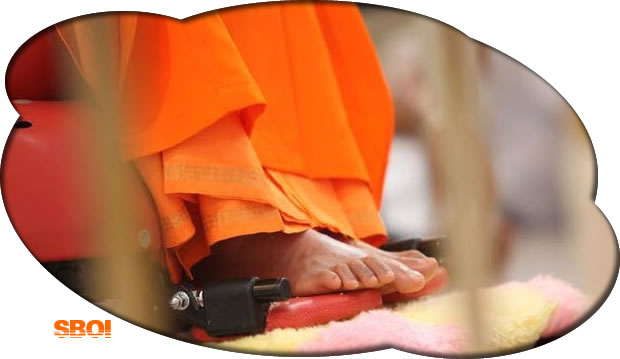 They sat in the marbled blocks awaiting His arrival. The Veda chanting stopped at 5 p.m. and resumed at 5:15 p.m. with Swami's arrival. Swami took a complete round and even as He passed by the Anantapur block, He asked for the letters the girls were holding. He asked them what their programme was about. Finding out that they wanted to sing songs, He told them to begin the moment He reached on the stage. As always, a host of initial offerings preceded the programme. This included the release of a CD. The programme consisted of a good variety of songs from light to classical. Starting with a prayer invoking Lord Ganesha, they went on to songs of Shiva and the Mother. Interspersed were two excellent renditions on the violins. The two girls who played those pieces seemed totally lost in the tune. There was a solo piece on the keyboard too. |
PLATICAS DE SATHYA SAI BABA
DIOS ES AMOR
LA VOZ DEL AVATAR
SITIOS SAI
domingo, 21 de febrero de 2010
AÑO NUEVO CHINO EN PRASHANTI NILAYAM
Imprimir
Labels:
TEXTOS
Lecturas:
Suscribirse a:
Enviar comentarios
(
Atom
)


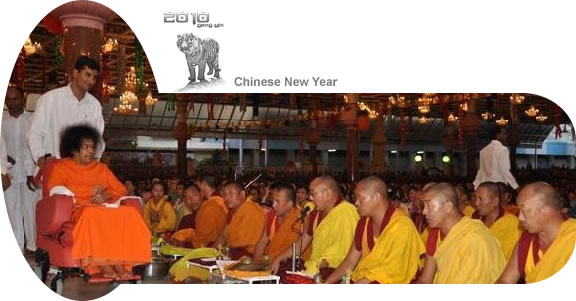
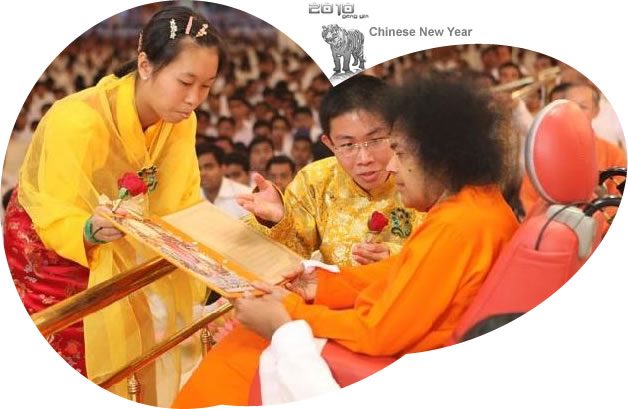
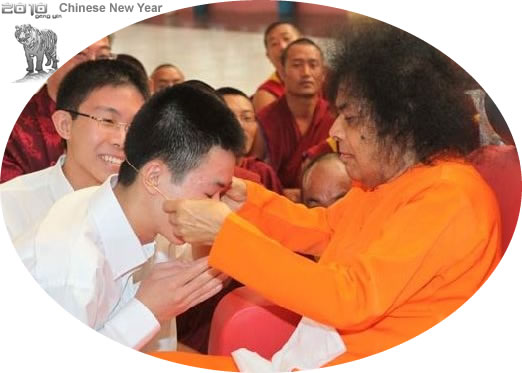
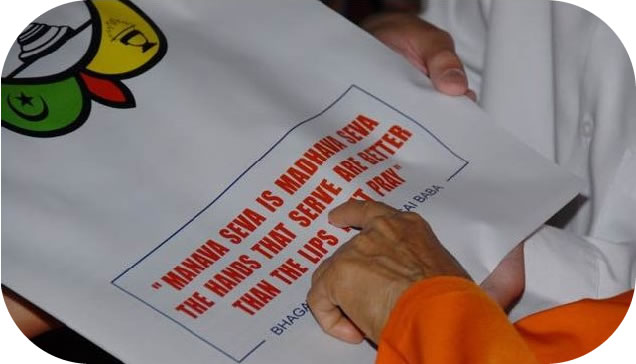
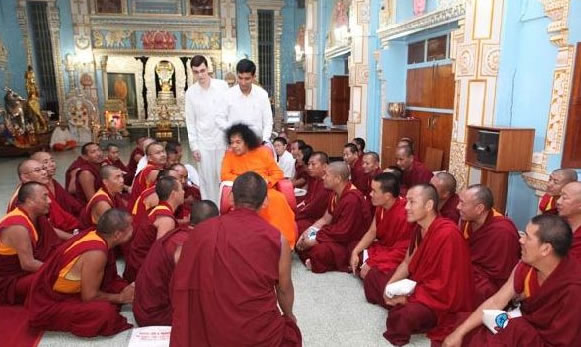
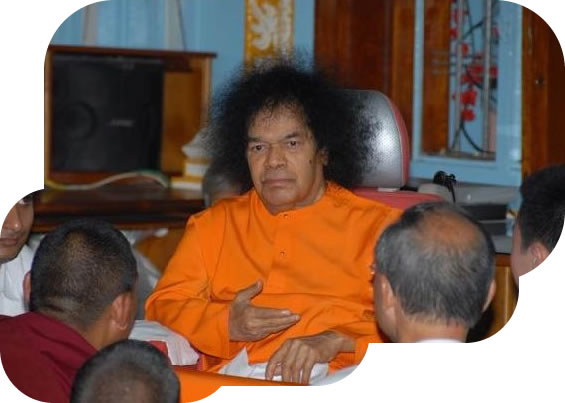
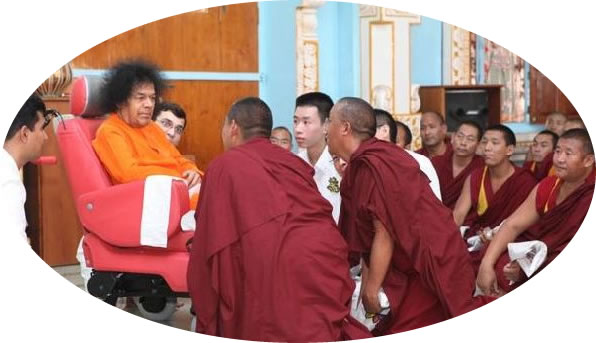
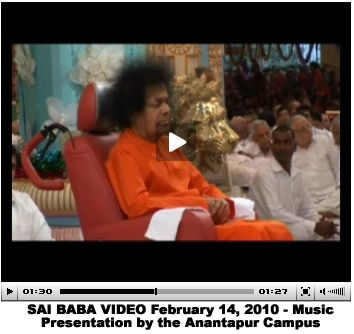

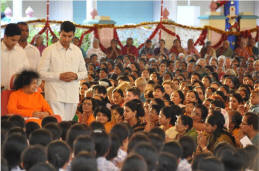
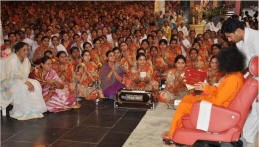
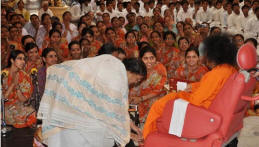
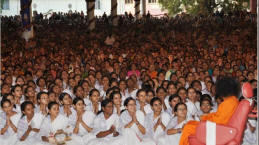
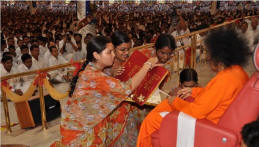













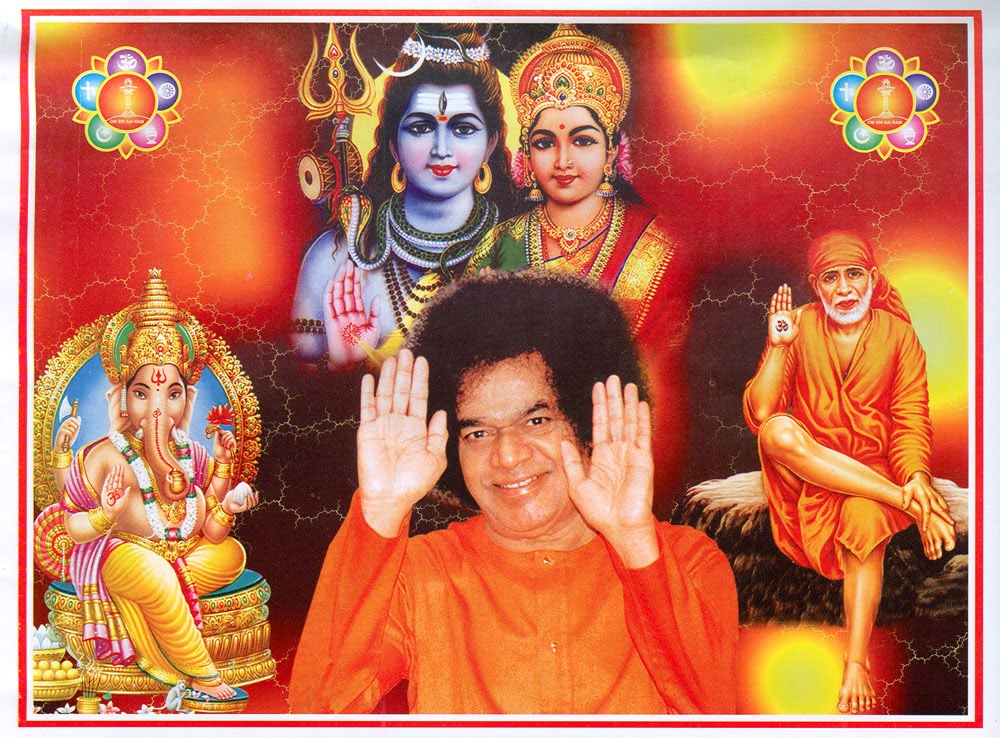






No hay comentarios :
Publicar un comentario